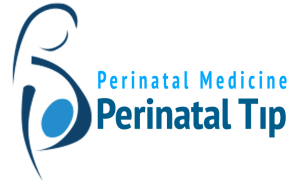
Toxoplasma
Toxoplasma
 It is a disease caused by a parasite called Toxoplasma gondii. The parasite is found in the bodies of some animals and can be transmitted to humans by eating the meat of these animals uncooked or undercooked. Or, raw meat can be passed through contact with other foods during preparation, without good washing. Of course, during the infection during pregnancy, it can also pass to the baby in the mother’s womb via the placenta and this is called congenital toxoplasma.
It is a disease caused by a parasite called Toxoplasma gondii. The parasite is found in the bodies of some animals and can be transmitted to humans by eating the meat of these animals uncooked or undercooked. Or, raw meat can be passed through contact with other foods during preparation, without good washing. Of course, during the infection during pregnancy, it can also pass to the baby in the mother’s womb via the placenta and this is called congenital toxoplasma.
Its frequency in the population is not known precisely because it does not cause symptoms or gives symptoms that can be confused with other diseases. However, it is estimated that 25% of women of childbearing age have had the infection before. As the age increases, the probability of encountering the parasite in any way increases, so the probability of having the infection increases.
The probability of having an infection during pregnancy is about 1% for expectant mothers who have not had an infection before. Those who have previously been infected are considered to be immune to the infection.
What is the importance of infection during pregnancy?
This parasite, called Toxoplasma, can be transmitted to the baby during the course of the infection during pregnancy. As a result, it can cause damage to organs such as eyes, brain, liver, intestines, and may cause developmental delay.
The further the gestational week is, the higher the probability that the infection passed during pregnancy will pass to the baby through the placenta. Thus, while the probability of passing the infection to the baby in the first trimester is 25%, this probability increases to 50% in the second trimester and to 75% in the third trimester.
What are the symptoms?
Toxoplasma infection is an infection that is often passed without symptoms. The course of the infection during pregnancy without symptoms does not reduce the risk of transmission to the baby. When toxoplasma presents, it is often in the form of swelling of the lymph nodes or rashes. In severe cases, symptoms of organ infections such as infection of the retina of the eye, infection of the heart muscle, infection of the brain and membranes covering the brain may occur in individuals who have been infected.
What happens when the infection is passed on to the baby?
In the first trimester, the probability of transmitting the infection of the mother-to-be to her baby is low, but when the baby is infected, the risk of miscarriage or serious toxoplasma infection sequelae in the baby is high. As the gestational week progresses, the probability of transmission to the baby gradually increases, while the risk of sequelae of the infection to be passed on to the baby decreases. There are exceptions to this rule.
Signs and symptoms such as jaundice, growth retardation, enlargement of multiple lymph nodes, enlargement of the liver and spleen, convulsions, calcification in the brain tissue, hydrocephalus, eye infection, microcephaly, and neurological developmental defects can be observed at birth in babies who were infected before birth.
How is it diagnosed?
Despite the variety of toxoplasma diagnostic methods, the most commonly used one is the search for toxoplasma-specific antibodies in the blood. For this purpose, antibodies called toxoplasma IgG and toxoplasma IgM are searched. IgM indicates a current infection, while IgG usually indicates a previous infection. Showing that IgG increases in the blood taken after a certain period of time also indicates a recent or ongoing infection. Toxoplasma IgM antibodies can remain positive for months after infection in some people.
What to do when an infection is detected during pregnancy?
Having an infection during pregnancy does not necessarily mean that the infection will be transmitted to the baby, and if it does, a problem will occur in the baby. The transmission of infections to the baby, especially in the later weeks of pregnancy, rarely creates a problem.
A four-fold increase in cytomegalovirus-specific IgG antibody in the blood in two separate measurements or detection of IgM antibody in a single sample is diagnostic of infection. In those with previously determined IgG, elevated IgG alone makes the diagnosis of recurrent infection. However, erroneous results are also relatively common as it can cross-react. Sometimes, depending on the previous infection, the IgM level may remain high for weeks or even months. There are Avidity tests that distinguish this situation.
In some cases, this infection is suspected by detecting early growth retardation, microcephaly and/or calcifications in the brain tissue.
Is the diagnosis possible for the fetus during pregnancy?
Although toxoplasma infection during pregnancy and especially in the first months of pregnancy, the probability of passing on to the baby in the mother’s womb is 25-30%, if it passes to the baby, the probability of serious damage to the baby is around 75-80%. Therefore, in cases where it is certain that she had toxoplasmosis in the first months of pregnancy, not continuing the pregnancy is an option.
If the gestational week is between 15-22 weeks, toxoplasma antigen can be searched in the amniotic fluid by amniocentesis. If the result is negative, the pregnancy can be continued. However, since there is a possibility of transmission from the mother to the baby after the date of amniocentesis, both IgM and virus antigen can be checked by taking blood from the baby’s umbilical cord at 22nd-23rd gestational week. If it is detected, termination of pregnancy should be an option, it is not always possible to say that it will definitely protect the fetus, despite the fact that the mother has a therapeutic drug against this infection and is used by the mother.
When there is a suspicion of toxoplasmosis, Spiramycin treatment should be started immediately to the pregnant woman and if it is confirmed that she has an infection; In this case, Triple Therapy consisting of Primetamine + Sulfadiazine + Folinic acid should be started immediately and alternate treatment with Spiramycin should be applied in three-week periods.